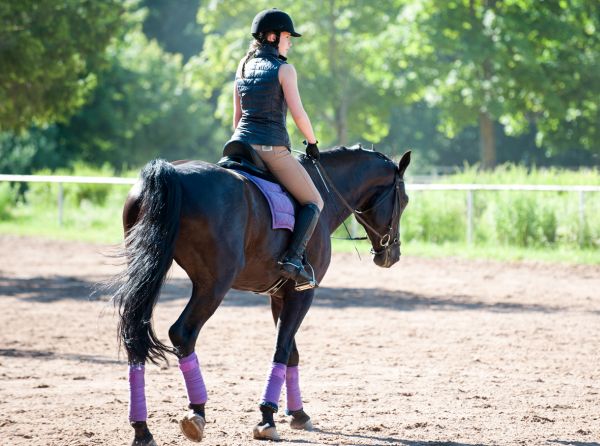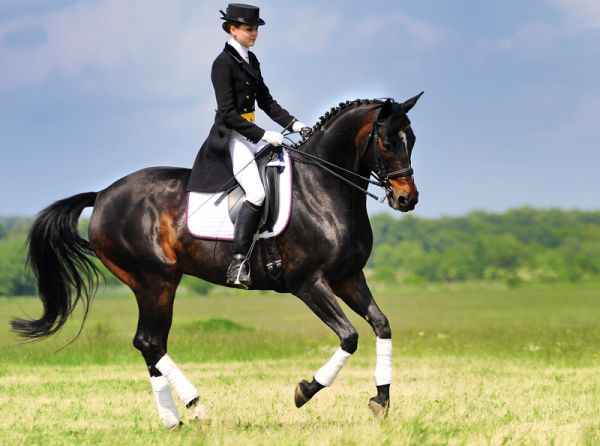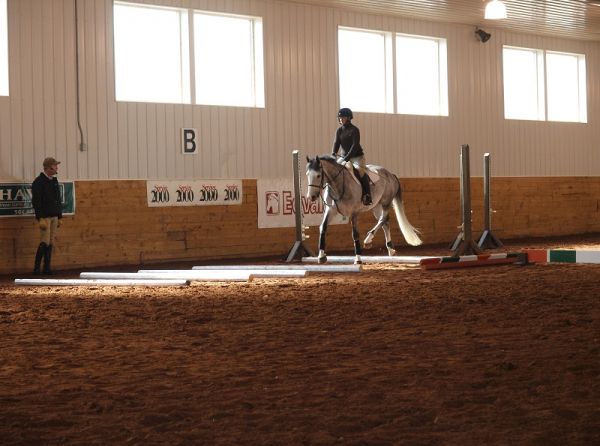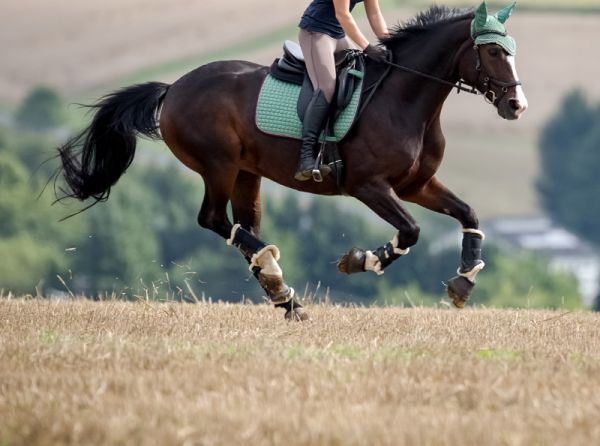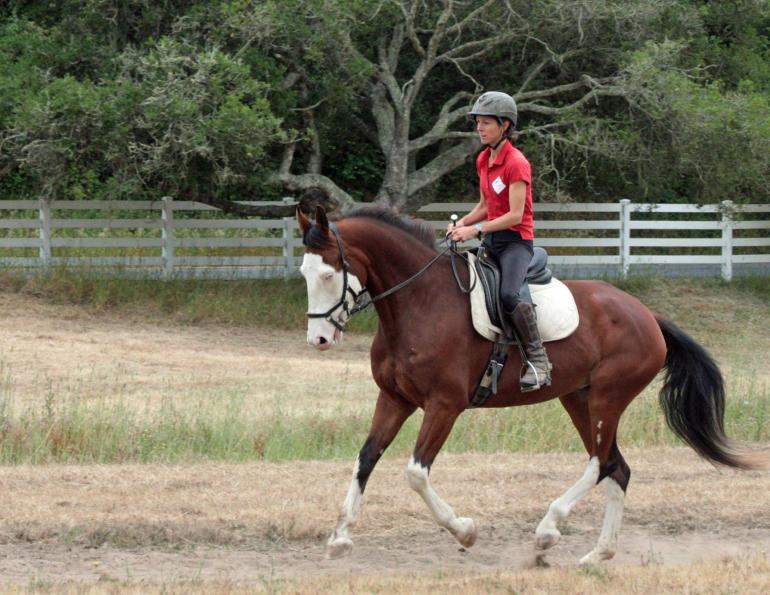By Jec A. Ballou
When I rode in Germany, my instructor was almost militant about the fact that I should be able to carry a whip equally well with each hand. By well, he meant that I should not tighten my wrist, yank on the rein, or get disorganized when changing directions and switching the whip over to my other hand. And, maybe most importantly, he meant that I should USE the whip.
We dressage riders can get so busy schooling certain details that we allow the horse to get sluggish when responding to our legs. This is when a whip can be an irreplaceable training tool. It allows the rider to keep their legs steady and quiet while at the same time insisting the horse respond to them! I also prefer a whip to spurs for most riders, since it allows the rider to be more effective but not risk being unkind or dependent on a heavy spur.
Below are three things worth knowing about carrying a whip.
1. There is no “correct” side on which to carry the whip in a dressage test. You do not HAVE to switch your whip hand when you change directions, nor do you have to keep it in your inside hand. You are allowed to carry it in whichever hand will help you be most effective. Most judges agree that it is preferable for a rider to keep the whip in one hand throughout the test rather than switching back and forth.
2. Saluting the judge with the hand that is holding the whip is a big no-no. Be sure to salute with the hand that does NOT have the whip when you halt at X.
3. In riding lessons and everyday arena riding we generally carry the whip on the inside of the horse. This tradition has descended from the idea that the whip can help influence engagement of the horse’s inside hind leg, which is necessary for balance. In riding school situations, this also prevents the whip from dragging along the outside wall or arena fence. It is widely accepted as just more “proper” to carry the whip in the inside hand, even though during any training scenario, it is acceptable to switch the whip to the outside hand.
Related: How to Find the Perfect Horse Riding Gear
Main photo: Shutterstock/Perry Correll




